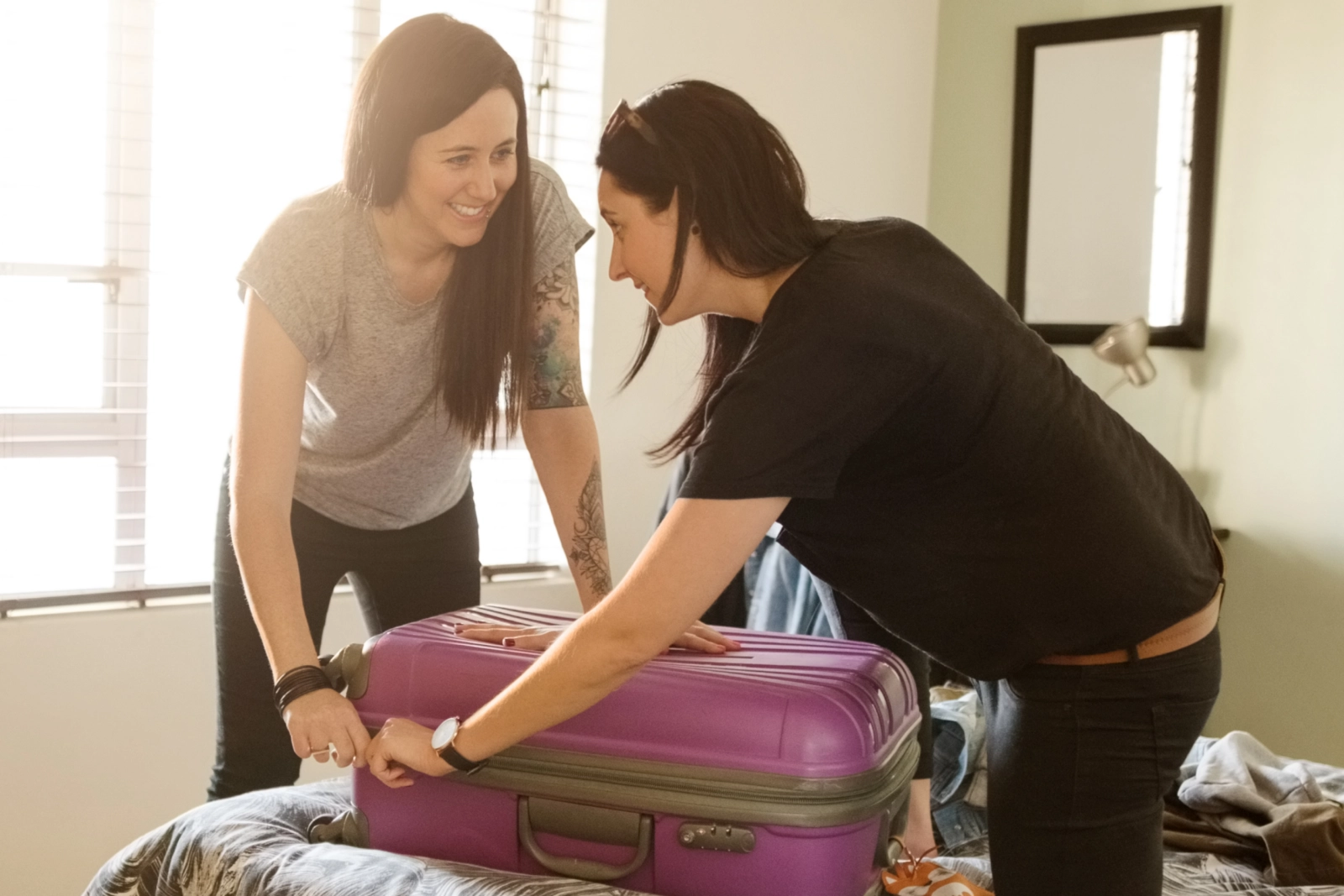Need an LGBTQ+ travel guide as you plan your summer trips? Whether it’s within the country or oceans away, these tips will help you prepare for any and every situation.
Gay Travel Guide
Research LGBTQ+ Laws in Other Countries
Before you hop on that plane, look up your rights in the countries you’ll be visiting. Unfortunately, homophobia isn’t the only culture shock you may experience; some countries take it a step further with legal discipline. Learn whether you can hold your honey’s hand via the EqualDex, which also informs you of laws regarding conversion therapy and adoption.
Look Into Nearby Health Centers
Check out the region in advance for local emergency rooms, physicians, and any specialty doctors you may need to see (such as an OB/GYN). You can also consider travel insurance if your healthcare insurance does not have a worldwide extension.
Prepare for Culture Shock – Even in the US
You may expect culture shock in countries where LGBTQ+ folks are less than out. But as recent events and legislation have shown, the LGBTQ+ safety and rights are a concern here at home, too. It’s easy to research non-discrimination laws in each state. Get the facts so you’ll know your rights.
Stay up-to-date on trans legislation.
Gender Neutral and Trans Travel Guide
Limited Validity Passports
If you are transitioning and need a passport to reflect this, you can apply for a limited validity passport. There are different forms you need to fill out depending on when you last received a passport (less than two years, or two or more years ago).
When applying with a passport received within the past two years, you’ll need to fill out form DS-5504. Your limited validity passport’s gender marker does not need to match your ID or citizenship documents, and no additional documentation of transitioning is necessary; just check your preferred gender. You will also need to submit your current passport and one color passport photo. These documents can all be sent via mail.
If you’re applying more than two years after receiving your original passport, you’ll follow the same process as the above with form DS-11 instead. Form DS-11, like DS-5504, does not require documentation of transitioning; it does require proof of U.S. citizenship instead of your previously-issued passport. There are applicable fees, and you’ll have to submit a valid ID and photocopy of this ID. You also must turn in the documents and pay the applicable fees in person at an acceptance facility or passport facility.
There are similar processes when changing your name. If you received your passport less than one year ago, you’ll fill out form DS-5504. You’ll also submit your original passport and a color passport photo, and the original or certified name change document.
If you’re changing your name and your passport was issued more than one year ago, you’ll fill out form DS-11 (or DS-82, if you’re eligible to apply by mail). You’ll include your passport, a color passport photo, a valid photo ID and copy of the photo ID, the original or certified name change document, and any applicable fees.
Limited validity passports last for two years. Keep in mind: you can only receive a limited validity passport in the U.S., so hold onto it when leaving the country.
Need a helping hand? LGBTQ+ Included Health and your care team can provide support as you navigate these forms, and advise you through the legal process of changing your name.
Gender “X” Passports
Non-binary people have two options: applying for a limited validity passport, or choosing a standard passport and marking Gender “X,” or “unspecified or another gender identity.” You still cannot request Gender “X” outside of the US or on expedited passport requests, though the option should be available in 2023.
Traveling with HRT
When it comes to traveling with syringes, you may pack them in your carry-on. The only requirement: they’re unused and accompanied by the necessary medication. Not required, but highly recommended: labeling your syringes and medication bottles, as you will have to announce to TSA that you have packed syringes and medication in your bag.
Transgender TSA protocols
You are allowed to wear whatever you want to the airport, but slight alterations can make the screening process much easier. If you are a trans man who is packing to imitate a bulge, make sure there is no metal in your packing piece. Instead, try one that is made of thicker silicone, or a softer fabric option. Same goes for trans women; choose a bra without metal.
If you bind your chest but want or need to skip wearing a binder during longer bouts of travel, there are other options that can still make you feel secure. A sports bra that has no bounce or a camisole with a built-in bra can be worn underneath clothing, while baggy clothes can be worn over clothes to ease body dysmorphia.
If you are chosen for a security pat down by TSA, you may choose the gender of the agent who performs this task. If you don’t, TSA will often assign an agent by assuming your gender from your physical appearance. You may also request a private pat-down if you’d feel more comfortable with this. If you are traveling with someone, consider having them come with you; it’s always safer to have a trusted person in the same room.
We hope this LGBTQ+ travel guide helps prepare you for your upcoming trips. Know that your care team is just one call away, and bon voyage!
At Included Health, we strive to provide friendly and exceptional healthcare navigation services to the LGBTQ+ community.Learn more about our LGBTQ+ Health services for your employees, and please do not hesitate to contact us to #GetIncluded for your company, health plan, and community.
If you are an employee or member looking for assistance, please visit our LGBTQ+ Member Hub to get started.
About the author

Tess Aurore
Tess Aurore is an LGBTQ+ Health Content Writer. A member of the LGBTQ+ community who copes with multiple chronic illnesses, she has firsthand knowledge of the healthcare system. Tess contributes her vast knowledge to the Content Team at Included Health, providing insight into LGBTQ+ patients’ struggles in a system that often overlooks her community’s unique and diverse healthcare needs.



